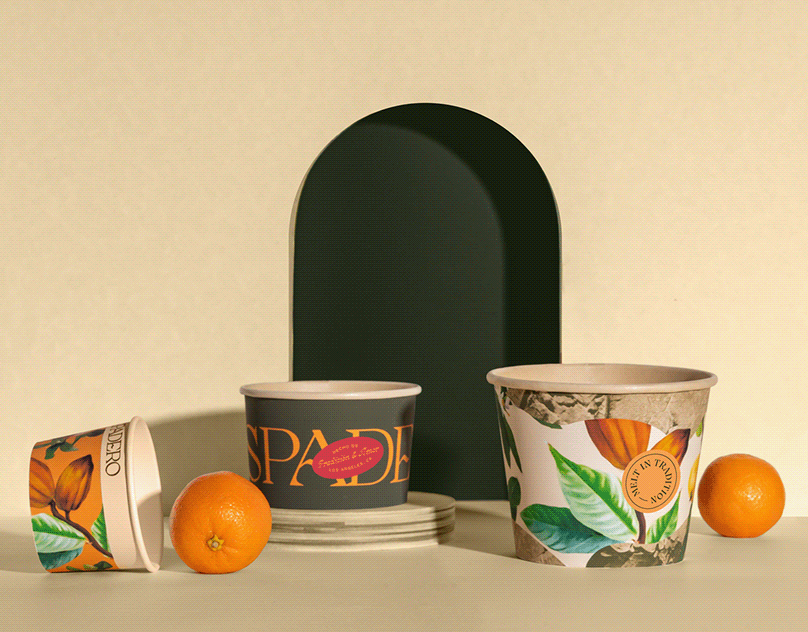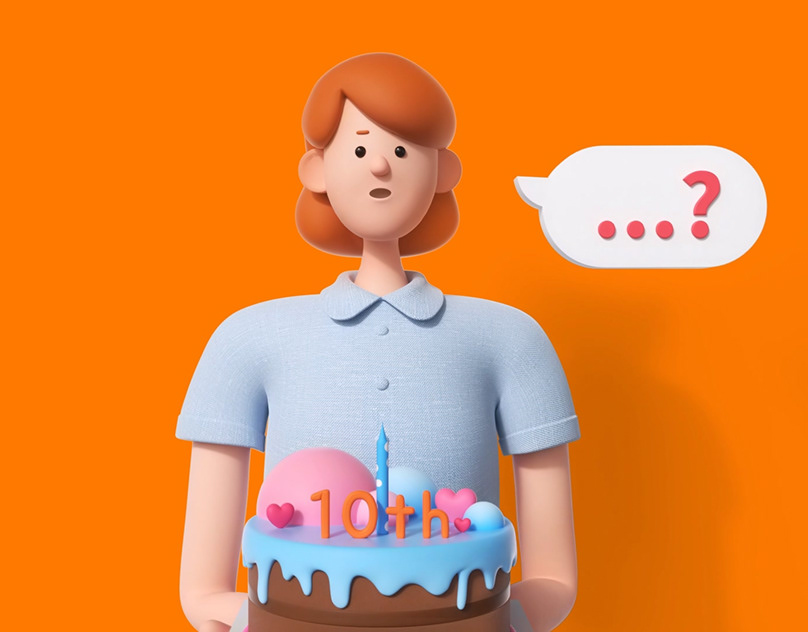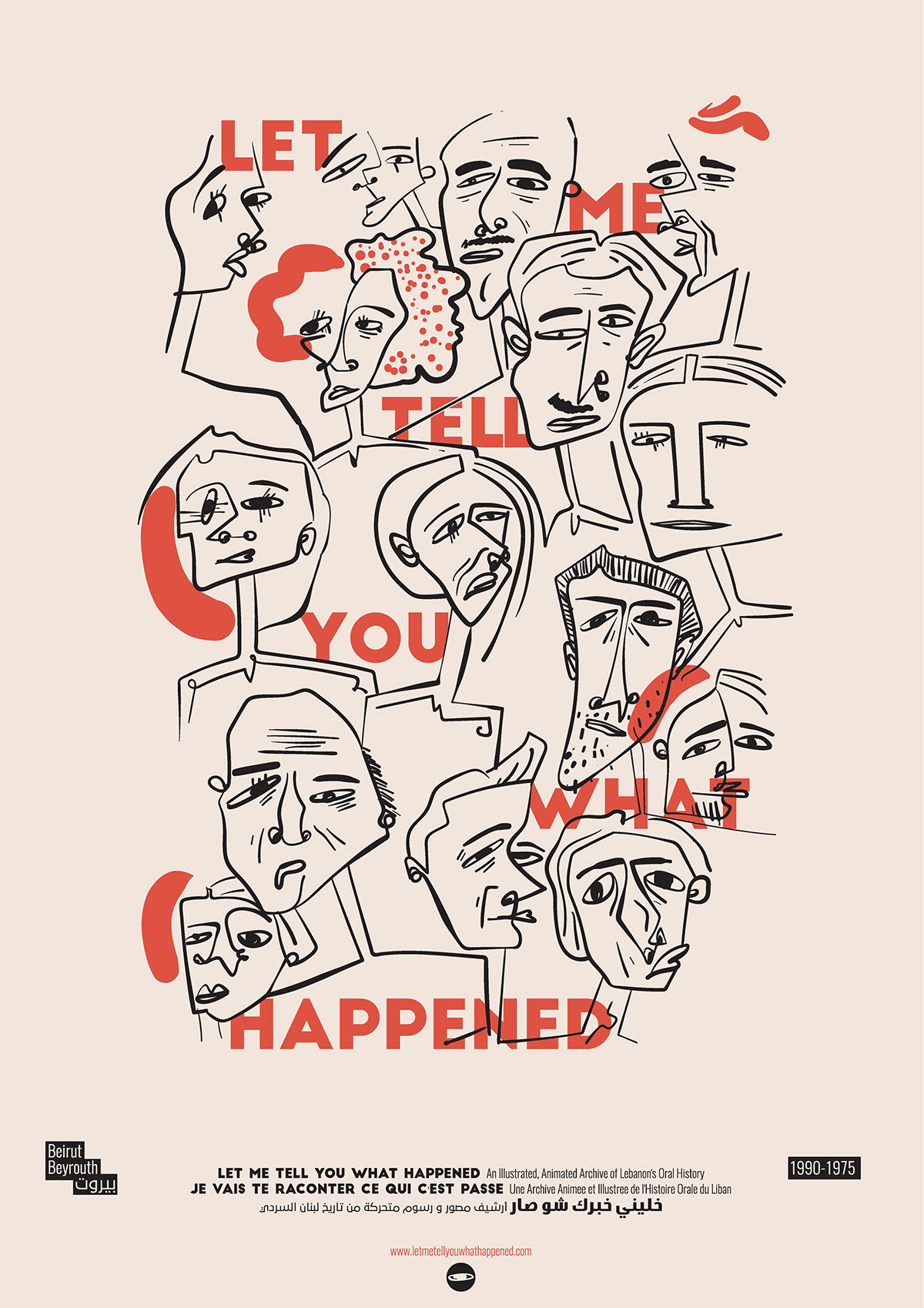
THE PROMOTIONAL POSTER

STEP ONE
You're walking in Hamra, a neighborhood in Beirut (Lebanon). You start to notice these orange signs in English, Arabic and French around you, that read "Something Happened Here" or "Do You Want To Know What Happened?"
You're curious.
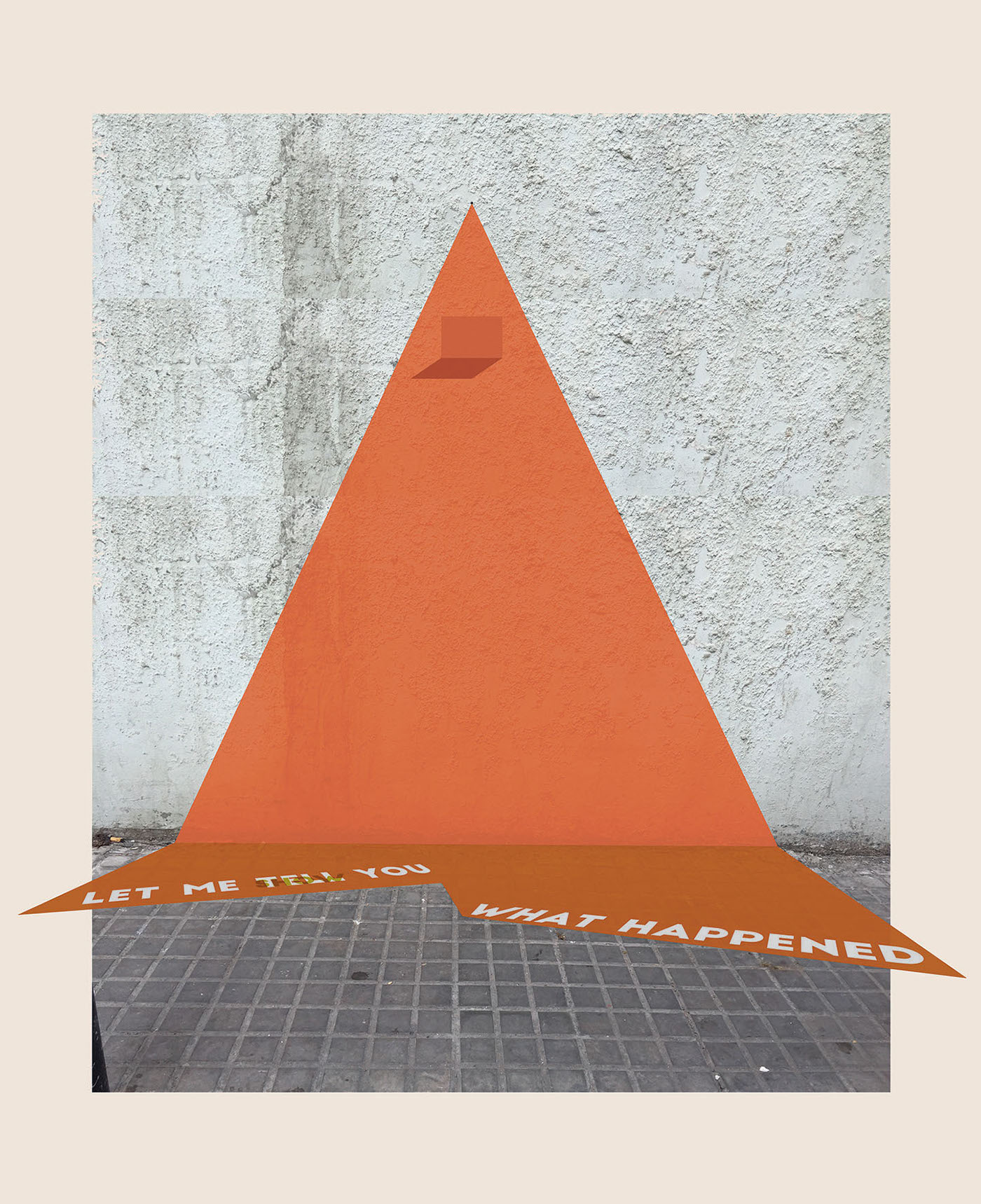
STEP TWO
You get to the street where a story took place and you see a splash of orange on the wall/floor and a peephole.
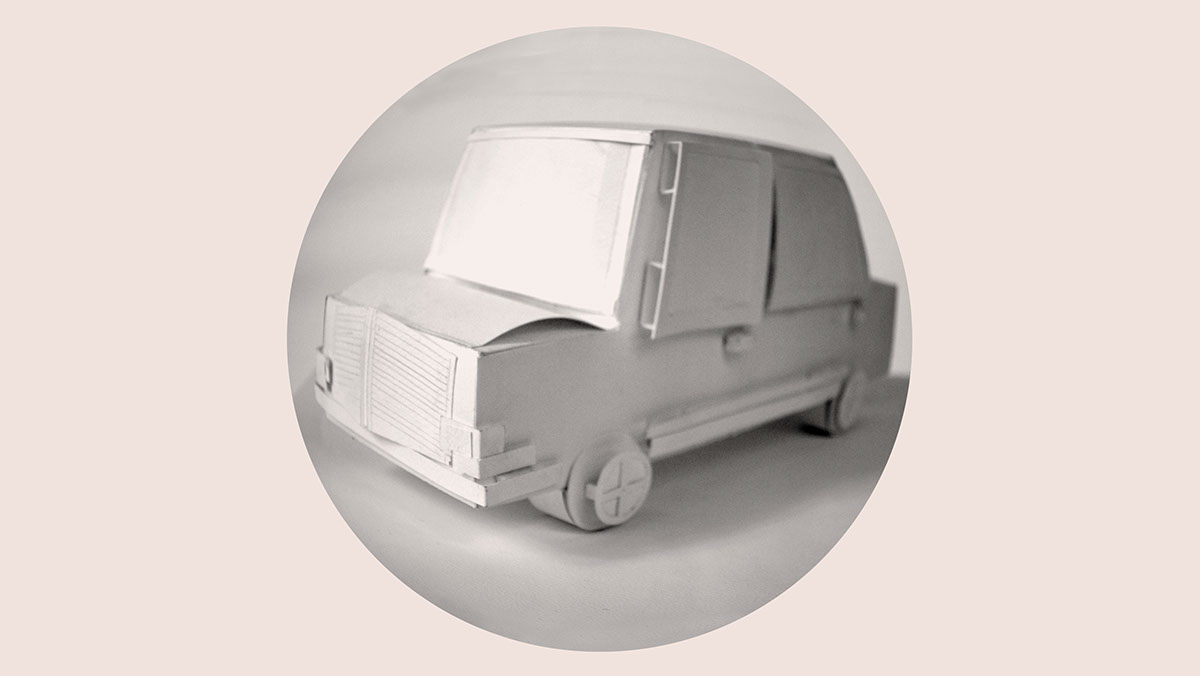
STEP THREE
You look into the peephole and you see this funny looking, white paper car.

STEP FOUR
On that splash of orange, there's a folder. Inside, there are postcards: on one side, there's an image and on the back, information about the image and a QR Code.
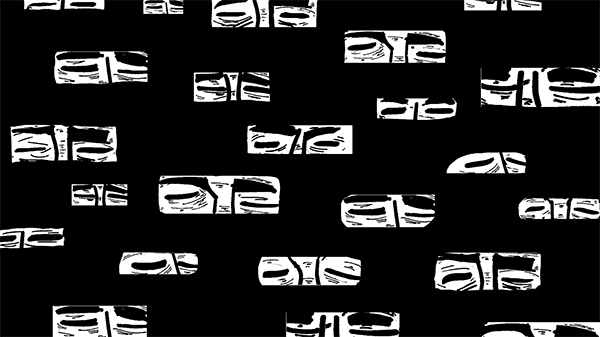
This GIF was printed out and turned into a Flipbook
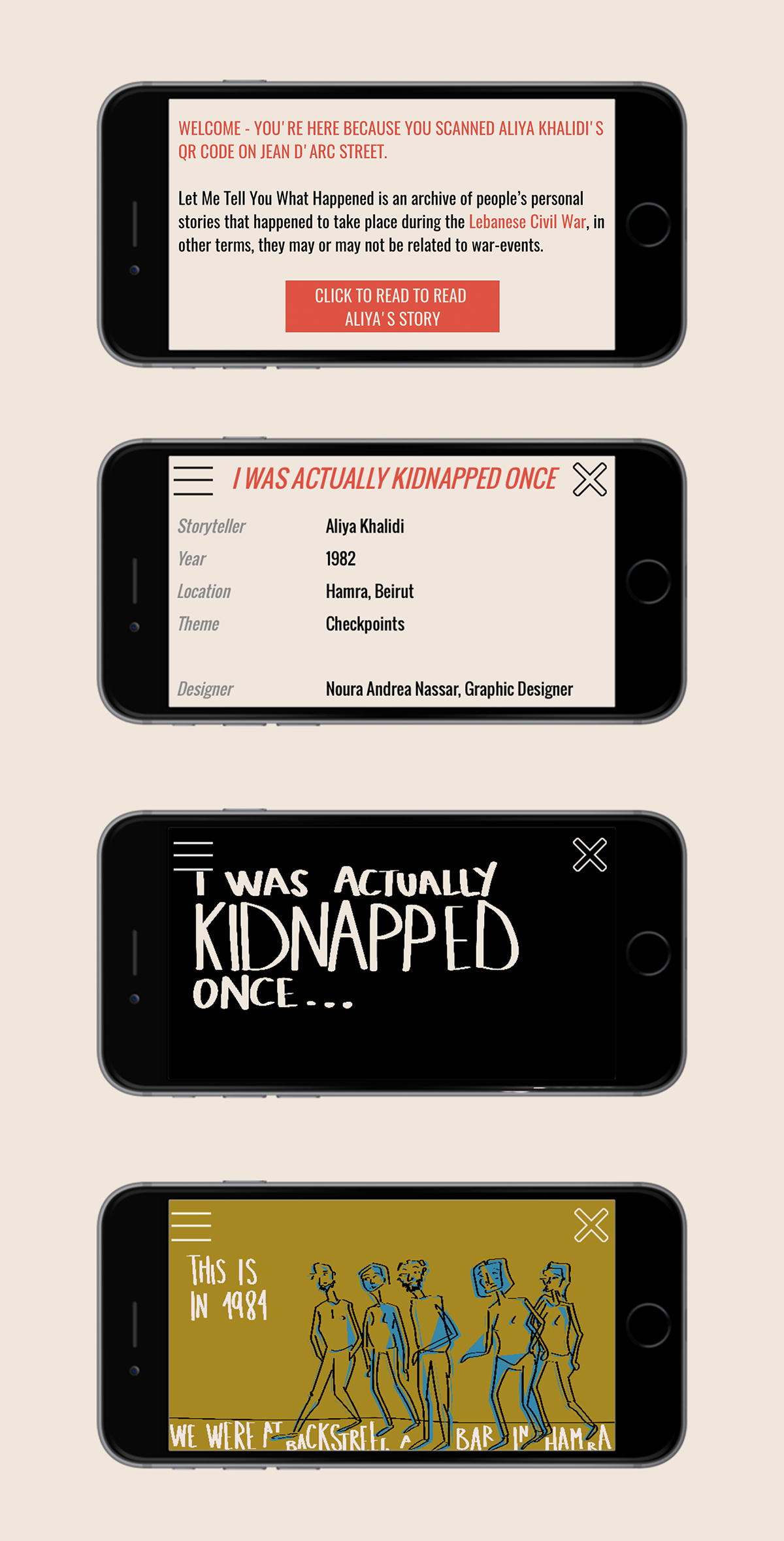
STEP FIVE
Scanning the QR Code takes you to a website (Landscape) which will start off by explaining to you what you just witnessed and then will let you read the story of Aliya Khalidi.
STEP SIX
In total, five stories were illustrated. The idea was to imagine what different designers would do if given a story.
You read Aliya Khalidi's story, I was actually kidnapped once. You go through the slide by clicking on the arrows (Left and Right). The story is composed of handdrawn illustrations and handwritten type. In her story, Aliya talks about a night in 1978, when her and her four friends were stopped at a checkpoint. Two masked armed men entered the car. Waleed, the friend behind the wheel, gun to his head, obeyed and drove around for a couple of hours, until..

STEP SEVEN
You discover the website from your compoter in order to enjoy the experience.
After skipping the Intro, you get to the stylized map of Beirut. There's a black bar at the top with the Logo, the Menu and a Search button.
You can search for stories by applying Filters such as era, location, storyteller, designer or theme.
You have access to a Timeline of the main events of the Lebanese Civil War.
You have access to a Dictionary that contains certain terminology of the war that is no longer used today.
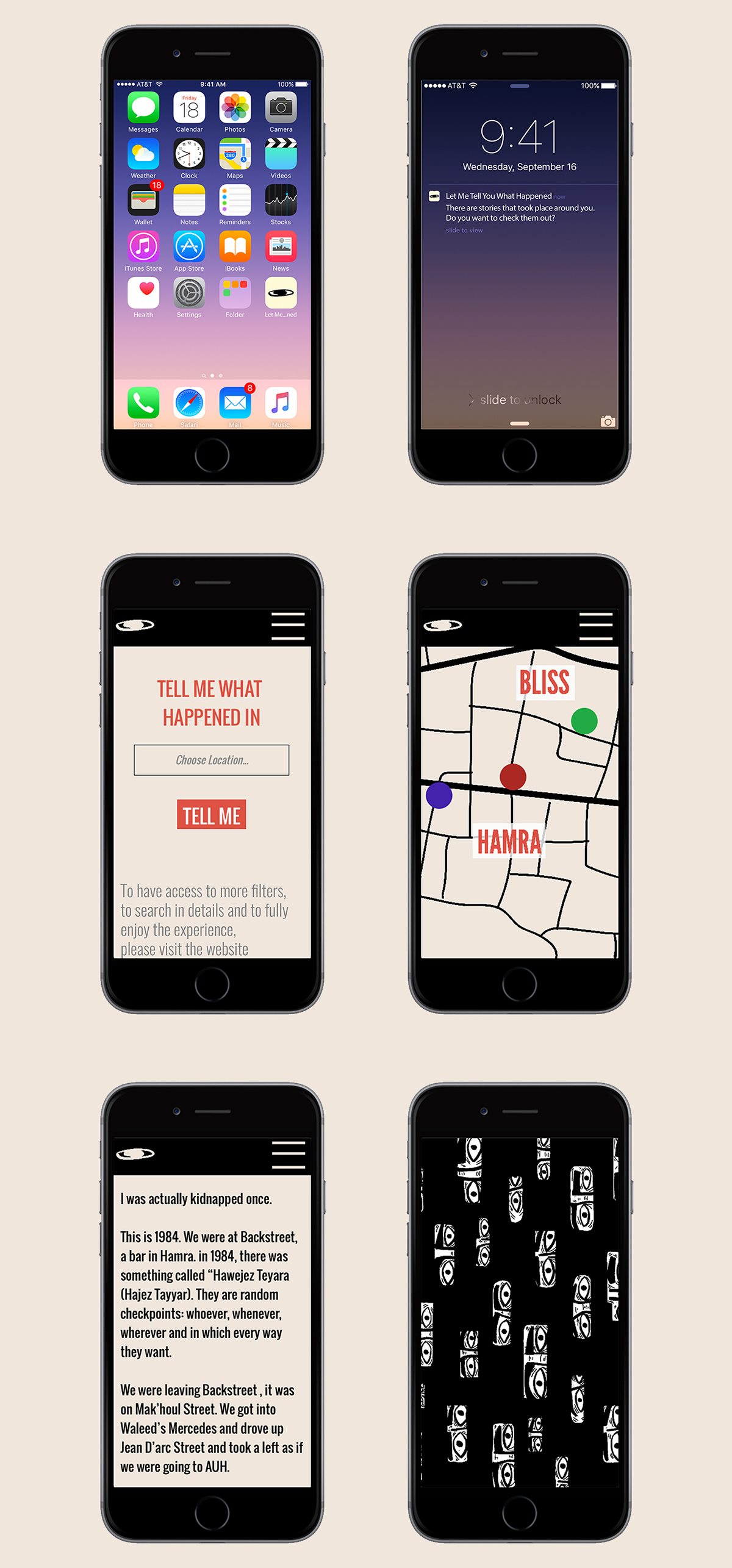
STEP EIGHT
You can then download the app.
The app will notify you, based on your Geo-Location, if there are stories around you.
The app will also notify you when new stories are uploaded to the website.
Because the app is not the main attraction, the stories aren't as visually elaborate as the website.
OTHER STORIES
In total, five stories were illustrated. The idea was to imagine what different designers would do if given a story.
"Looking for Vantage" is the story of my grandmother who, during the 1982 Israeli siege of Beirut (Lebanon), feared running out of food and water for her and her family. Therefore, every morning, she would walk around Hamra, a neighborhood in Beirut, looking for anything she could find. There was already very little food available: canned meat, beans... There weren't any fruits or vegetables, and rarely any bread. One day, she overheard a woman asking for "Vantage". My grandmother decided to go looking for this "Vantage", thinking it was some sort of new meat product.
The first part of the video shows the navigation process of this specific story before showing each slide, one by one.
OTHER STORIES
In total, five stories were illustrated. The idea was to imagine what different designers would do if given a story.
"BRUCExBEIRUT" is the story of Lebanese actor, Fadi Abi Samra. He grew up in a war-torn Beirut. He loved going to the movies, specifically to Cinema Salwa. There he saw Western and Karate movies, mostly. One day, he had a bit of extra money and was able to afford a ticket on the Balcony. Midway through the movie, a bomb goes off in the movies. He witnessed the entire scene from the balcony, looking down.
Fadi loved Bruce Lee growing up. The collages are made from animated Bruce Lee scenes in a destructed Beirut.
OTHER STORIES
In total, five stories were illustrated. The idea was to imagine what different designers would do if given a story.
Georges S'en Va (Georges is Leaving) is a short animation based on an interview conducted with my father, Georges Nassar, about his experience when leaving Lebanon in November 1975, a couple of months after the beginning of the Civil War. He talks about the difficulties getting to the airport due to the dangers of the road, the services forbidding him to travel due to missing papers about him completing his military service...
The visuals, highly colourful and full of life, contrast strongly with the darkness of the story and the monotonous tone of my father.
OTHER STORIES
In total, five stories were illustrated. The idea was to imagine what different designers would do if given a story.
"War, Camus, Sartre and I" is based on an interview conducted with my mother, Lina Abyad, about her experience during the Lebanese Civil War. She doesn't remember much, however, she remembers reading. A lot. Discovering writers such as Camus and Sartre. These writers and thinkers resonate today in her speech.




